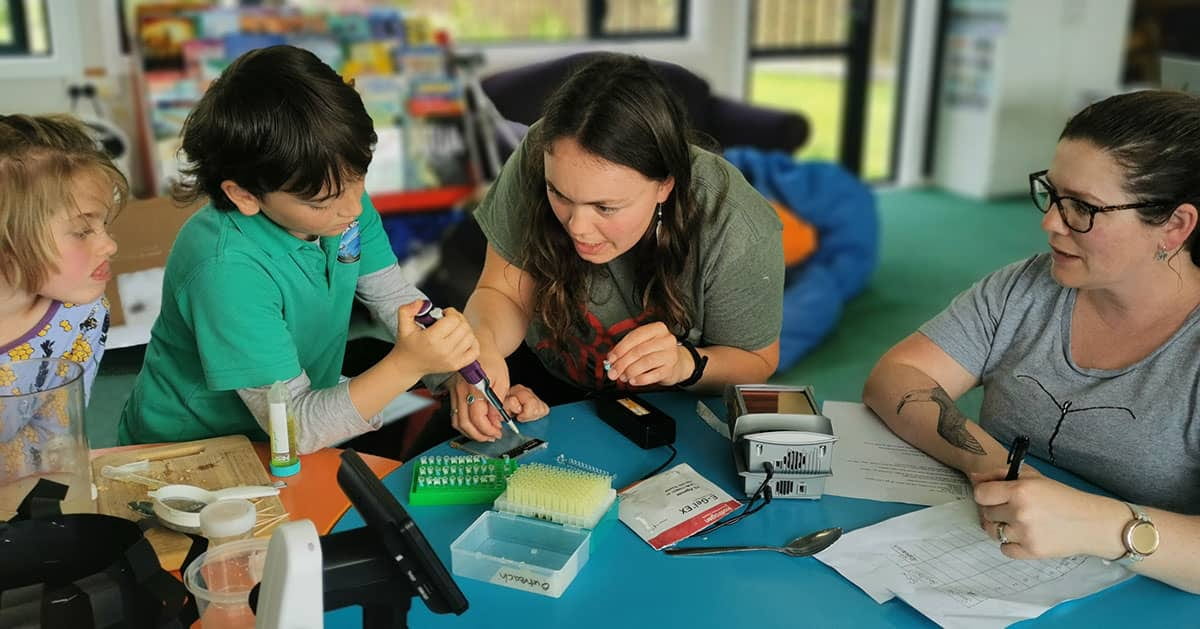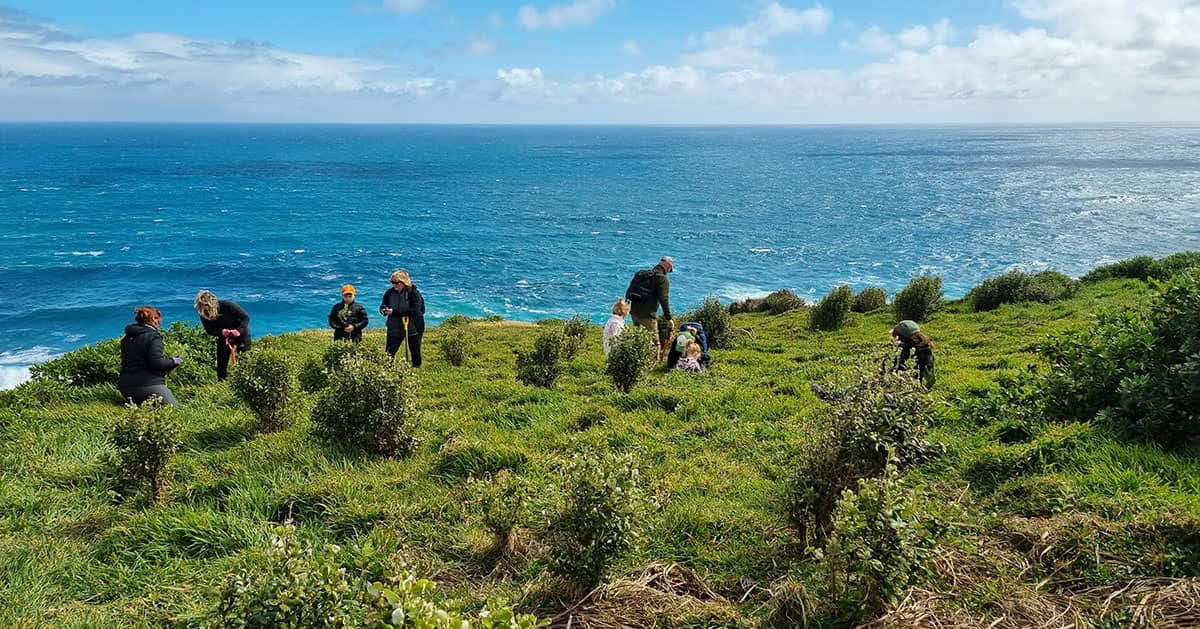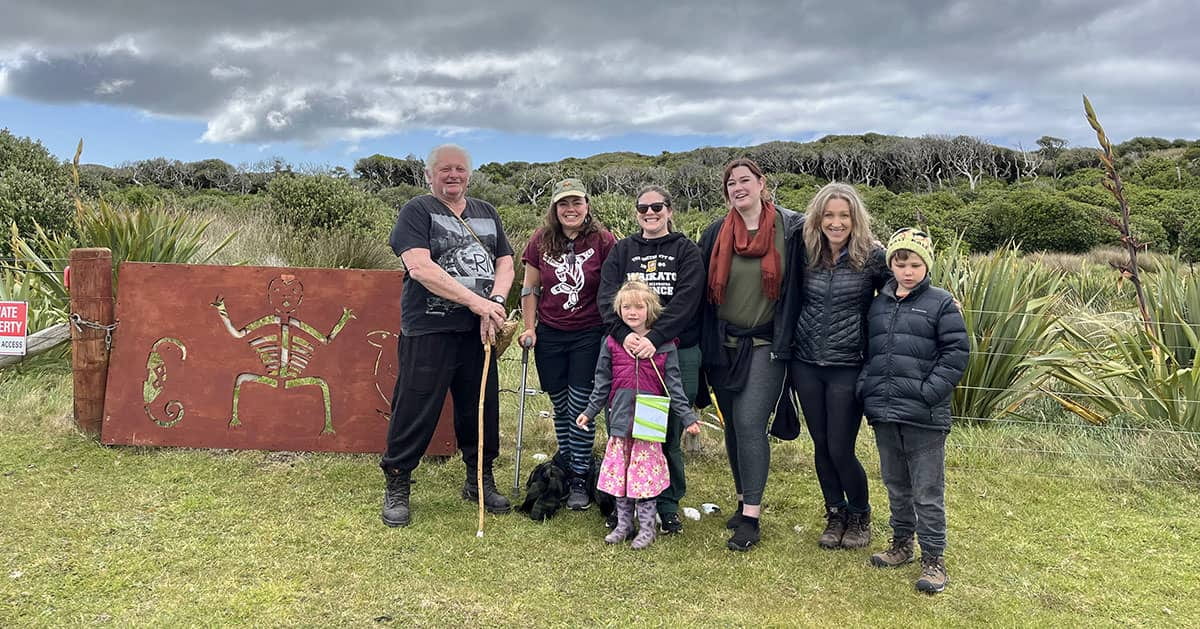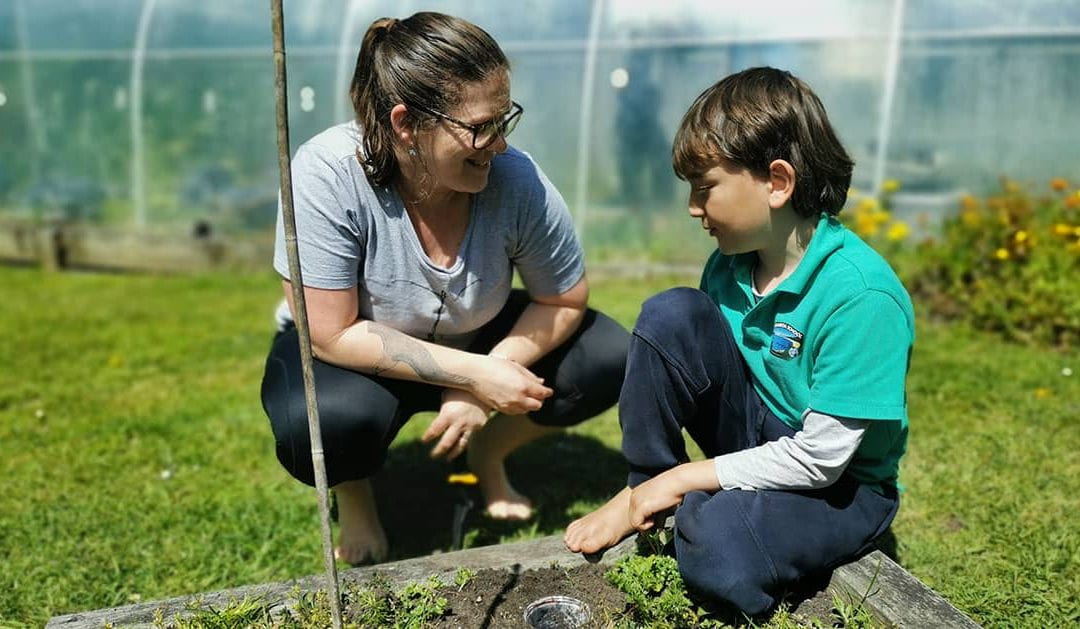Image: Chrissie Painting and a student from Kaingaroa School learning about bugs.
26 January 2024
Written by Chrissie Painting and Tammy Steeves.
You can’t get much more remote than the Chatham Islands, a bumpy plane ride 840km east of Ōtautahi|Christchurch. Although the archipelago is made up of about ten islands, people live on just two: Rēkohu | Wharekauri | Chatham Island and Rangihaute | Rangiauria | Pitt Island. The rest are wild places, uninhabited by humans but important refuges for many threatened species.
A poignant issue for Chatham Islanders is that many miheke | taonga | treasured species were once found on Rēkohu and Rangihaute, but due to invasive predators are now restricted to these other islands that are tightly biosecurity-controlled and off-limits to the public. While visiting researchers are given the privilege to visit these remote islands, only a handful of residents have had the opportunity to interact with many of the species that make their islands unique.
With that challenge in mind, several Te Pūnaha Matatini investigators visited blustery Rēkohu and Rangihaute in October 2023 to connect with the community through a series of school visits, hui and a public outreach event. Chrissie Painting and Tammy Steeves, both principal investigators at Te Pūnaha Matatini, together with Roseanna Gamlen-Greene (TPM Whānau), Liz Parlato and Morgane Merien made up our team of five wāhine from five institutes, joined together by our shared values and passion for science. We were also joined by two special stowaways, Chrissie’s daughter (age 6) and Tammy’s son (age 10), who are both fabulous science communicators.

Roseanna Gamlen-Greene teaches students at Kaingaroa School how to pipette.
Our kaupapa was to facilitate connections: connections between scientists from mainland Aotearoa and the Chatham Island community, connections between Chatham Island people and endemic fauna, and connections between species (e.g. karure|kakaruia|Chatham Island black robin and their invertebrate prey).
One of those species is the Rangatira spider, a gentle giant famous for spooking late night visitors to the long drop on Hokorereoro|Rangatira island. It roams for wētā on tree trunks and is a relative to fishing spiders that have particularly whacky mating behaviour – which is what led Chrissie to propose her latest Marsden-funded project.
Despite a population size of only around 700 people, the Chatham Islands supports three schools: Kaingaroa, Te One and Pitt Island. However, the rolls are teeny tiny. At Kaingaroa, way up in the far north-west corner of Rēkohu, our own tamariki doubled the roll for the day, with just two kids in the whole school!
Just Tammy and Tate made it to Pitt Island this time around, where they explored DNA extraction and genetic sexing of birds with four fabulous students, and shared a few stories of how Tammy and her team use genetic and genomic data to help save threatened birds. The full team visited Kaingaroa and Te One, adding pitfall trapping to monitor backyard bugs and bug treasure hunts to the list of activities.

Planting trees at The Gap.
We also organised a weekend public event called ‘Wings, Webs and Wonders’, scheduled to overlap with the one day a week that Bubbles opens her café – it’s the only place and time you can get a serious coffee on the island! We set up a bunch of stands where people could inspect their pitfall trap catches under a microscope, paint a 3D Rangatira spider, and make a bowl of spider soup. We also had a series of genetic and bird-focussed interactive activities where people could extract DNA from split peas, genetically sex birds, eat like a black robin, learn to use pipettes and even touch one of the original traps used by Don Merton to rescue the last of the Chatham Island black robins from extinction. There was a great turnout, saved by the fact the final for the Rugby World Cup was the following morning and not at the same time as our event.
Our team had several special visits with imi | iwi. We had conversations about our favourite study species on Kōpinga Marae (Hokotehi Moriori Trust) over an amazing kai while our kids got to know the local tamariki by doing ninja rolls over mattresses in the wharenui. Tammy and Liz had a special tour of the work done by Maui Solomon (Moriori Imi Settlement Trust) and Susan Thorpe at Manukau, and Chrissie and Liz shared stories over a cuppa tea with members of Ngāti Mutunga o Wharekauri Trust.

Visiting the kopi forest on Rotorua.
We were blown away by the hospitality of folks on the islands. Our team was treated to a visit to the rakau momori (sacred tree engravings) in the kopi forest at Rotorua, where we learnt moving stories of the Moriori people. It would also be remiss to leave out mention of the TWO occasions we had crayfish donated to us, where Tammy got to introduce the team to Canadian ‘lobster rolls’. Chrissie’s daughter got to boogie with the locals at the annual Halloween Disco, and we all felt rejuvenated by a visit to The Gap where we helped Department of Conservation rangers plant trees perched on the cliffs above the wild waves below.
We are all counting the days until we can return to this special place and its people.
The team were generously supported by seed funding from Te Pūnaha Matatini, the University of Canterbury Vision Mātauranga Development Fund, and two Marsden Fast-Starts (awarded to Chrissie Painting and Liz Parlato).

